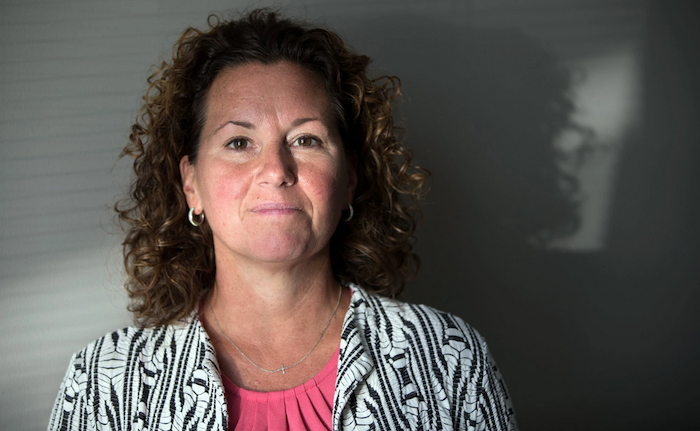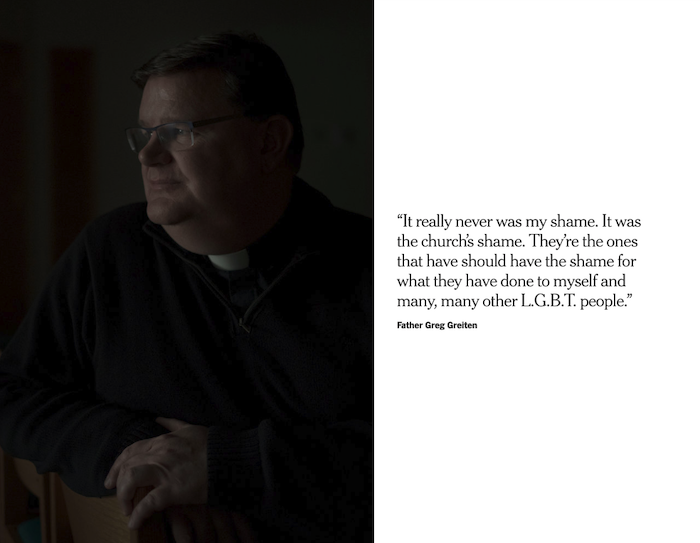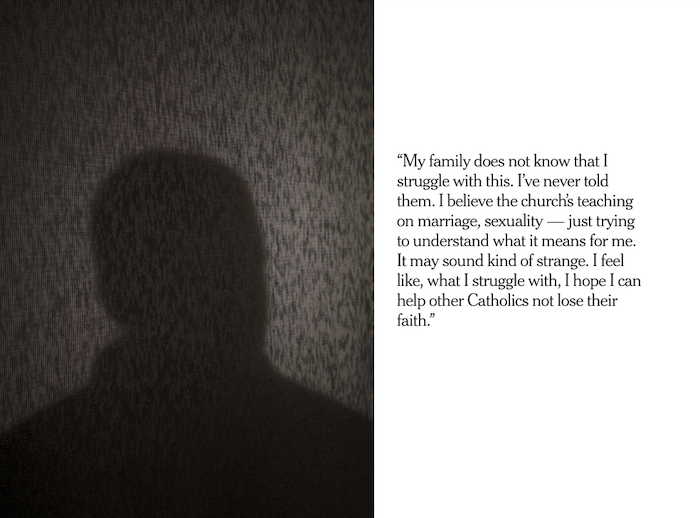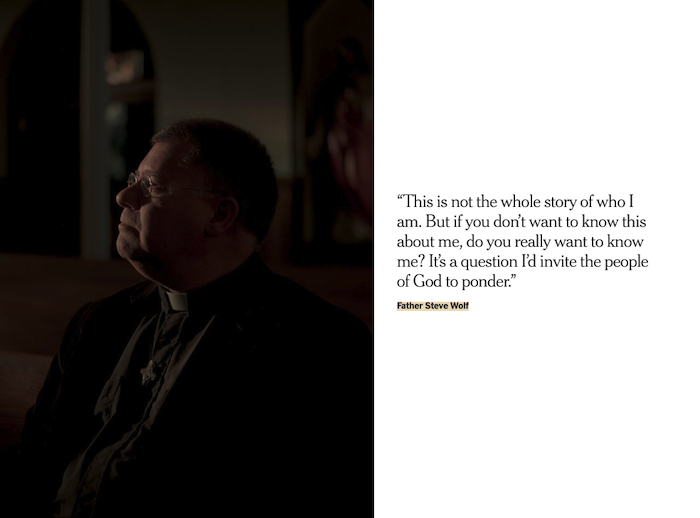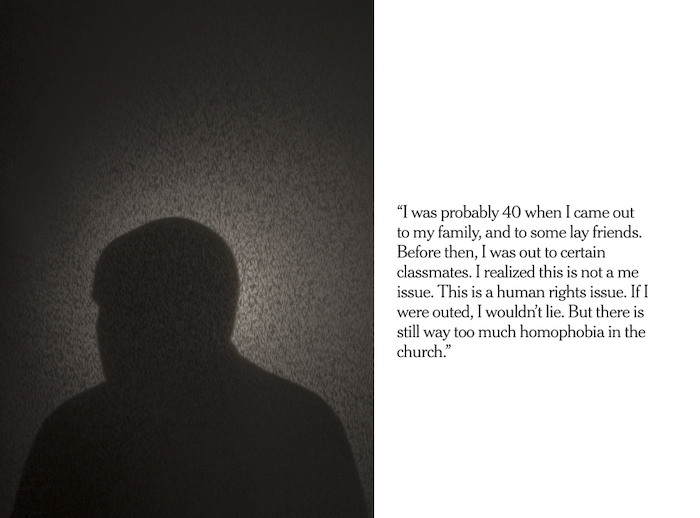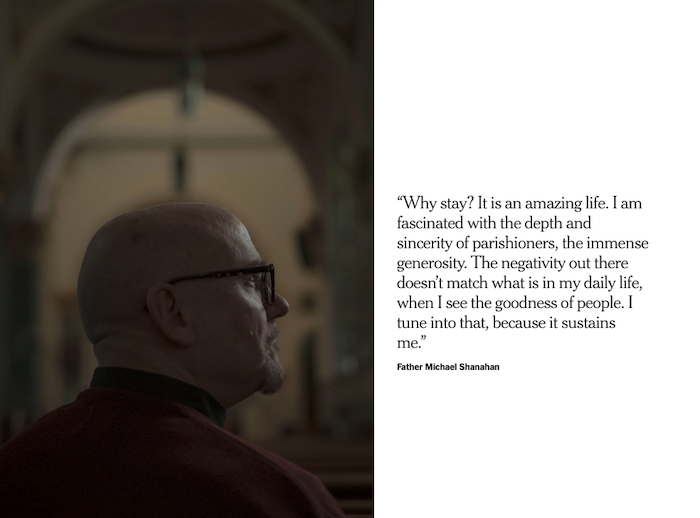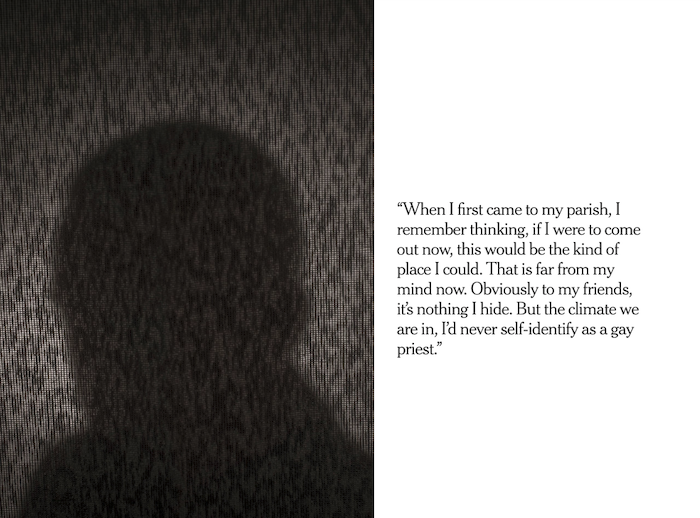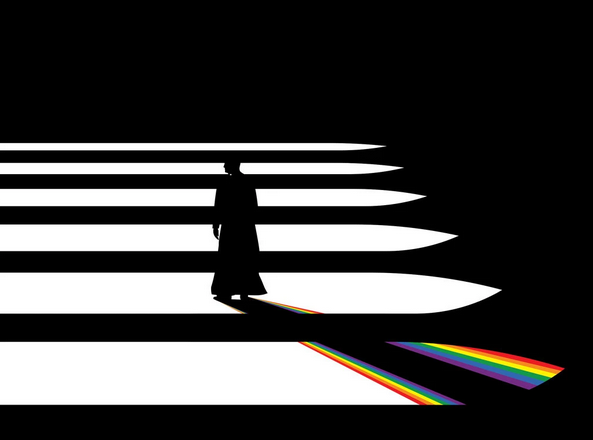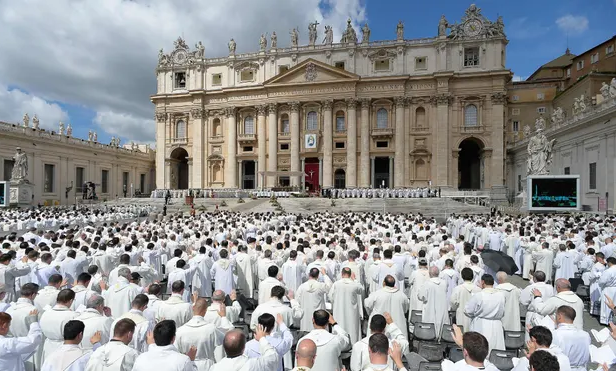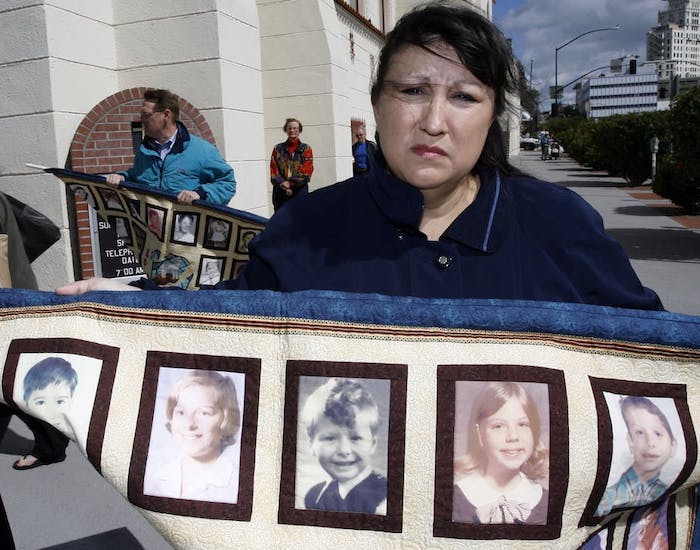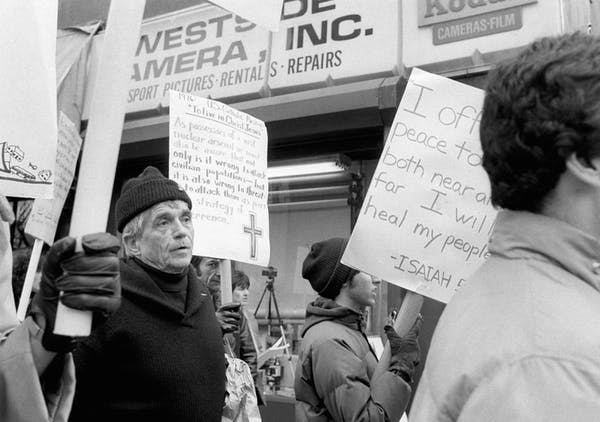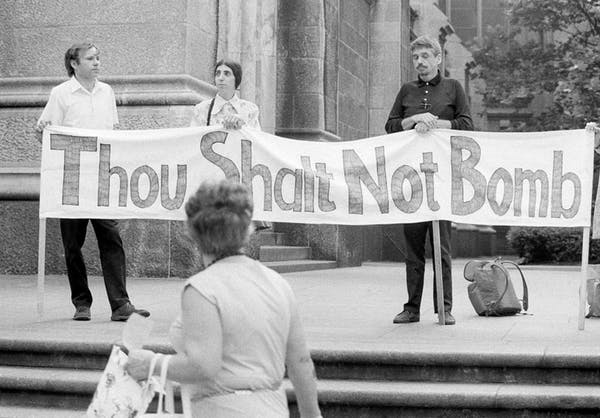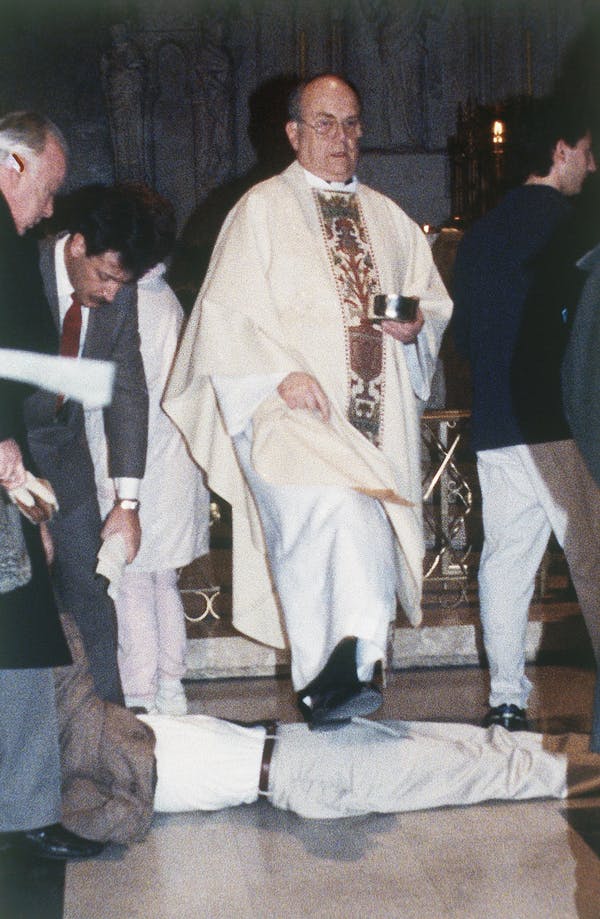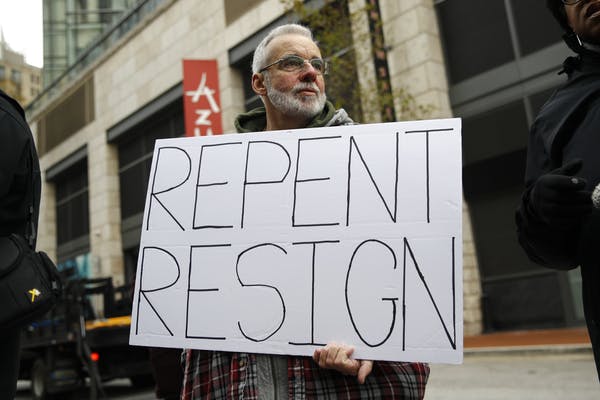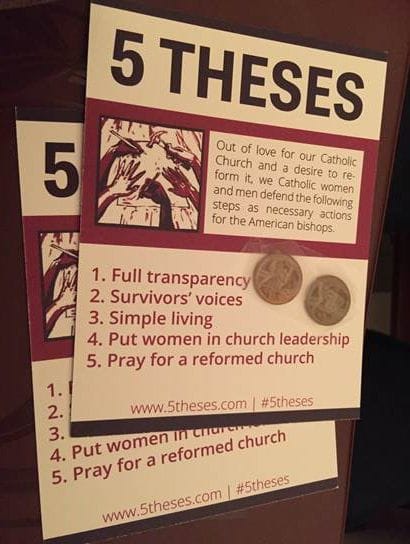
Less than a week after Theodore McCarrick became the first cardinal ever defrocked, a New Jersey priest has for the first time agreed to be interviewed about his accusations that McCarrick sexually abused him in the 1990s and the effect the alleged abuse has had on his life and career.
In exclusive interviews with the Post, the Rev. Lauro Sedlmayer said the interactions with McCarrick, who was then his archbishop, in Newark, set off a downward spiral that severely damaged his psyche and career. Now 61, the priest says he told three bishops but nothing was done.
Sedlmayer’s allegations against McCarrick, which include forcing him into multiple sexual situations when Sedlmayer was a young priest in the 1990s, are similar to others but add detail to the picture of how church higher-ups reacted to rumors and complaints that the high-ranking churchman was preying on younger clerics.
When McCarrick was first suspended, New Jersey bishops said last summer that they’d received three complaints years earlier against McCarrick by adults — priests and seminarians. One was from former priest Robert Ciolek, who has been public and vocal since. The second man has not. Sedlmayer is the third.
The Brazilian-born Sedlmayer has been in a tense stand-off with his superiors for a decade, with both sides filing lawsuits and accusations of sexual and financial impropriety on each side.
Sedlmayer says much of his troubles began with what he recently described in written testimony to Vatican officials investigating McCarrick as “sexual battery.” In that testimony, in litigation and in interviews with the Post, he said the incidents with McCarrick happened over several occasions around 1991, and that church officials in New Jersey later retaliated against him for accusing top clerics – McCarrick and others — of sexual impropriety. A 2012 lawsuit by Metuchen officials against Sedlmayer says the priest is the one who is trying to distract from his own inappropriate and possibly illegal behavior.
Sedlmayer’s suit was later dismissed, a move his attorney said was mutually agreed-upon because the diocese threatened to laicize Sedlmayer if he didn’t agree. The court did not order the dismissal, Goldman said. The church’s suit against Sedlmayer appears to have gone nowhere. Goldman said the church dropped it. Metuchen officials did not respond to a request by The Post to clarify the matter.
Sedlmayer continued to work in Metuchen until he retired last year. He still celebrates Mass on a part-time basis but says his life was seriously damaged by McCarrick’s actions and then what he says was a cover-up by subsequent bishops.
“He certainly never asked, he just did what he wanted,” Sedlmayer told the Post about McCarrick. “It was sexual battery [because of] being forced to do this with someone who represents himself being so close to the Lord. My whole view of the church changed drastically from that moment on….I was a sheltered, naive 29-year-old. This was a holy man of highest rank in the Church.”
Barry Coburn, McCarrick’s civil lawyer, declined comment for this story.
In his 2011 lawsuit, Sedlmayer said he told Metuchen Bishop Edward Hughes soon after at least three interactions with McCarrick around 1991. Hughes, who died in 2012, advised him “to forget about the sexual incidents conducted by Cardinal McCarrick and to forgive him for the good of the Roman Catholic Church,” the suit says.
“The sexual incidents with the Bishop [McCarrick] were certainly traumatic for him. In spite of his adult age, there was a significant power and authority imbalance in this situation,” a social worker wrote in 2010 of Sedlmayer after a weeklong psychological analysis at a church-run facility. “He depicted himself as a naive young man forced into a homosexual experience by his superior, who exposed him to a malicious world that he did not know before.”
The Post reviewed two documents shared by Sedlmayer that included descriptions he made to mental health workers about what happened to him. The 2010 report came from a church-run facility in Massachusettes named Advent. He also shared a 2013 assessment report from a mental health clinic for U.S. veterans. Sedlmayer was a chaplain in the Army National Guard.
Metuchen and Newark declined to comment in detail this week on Sedlmayer’s allegations. A Metuchen spokesperson said the diocese reviewed its files and has no record of a complaint from Sedlmayer to Hughes. A Newark spokesperson pointed to a statement of general regret Cardinal Joseph Tobin issued last week, when McCarrick’s defrocking was announced.
The Post reported briefly last year on Sedlmayer’s suit but at the time the priest declined to be named or interviewed. Earlier this month, he agreed for the first time to be interviewed and shared the mental health records as well as his testimony to the Vatican.
In his 2011 lawsuit, Sedlmayer said he contacted McCarrick around 2010 when he was sent for the extended counseling, and wanted McCarrick to know he “did not intend to conceal the harassment and abuse that he encountered with Cardinal McCarrick.” McCarrick, the lawsuit said, said the priest “should tell the truth.”
McCarrick was suspended in June after the New York archdiocese found credible an allegation that he groped an altar boy decades ago. Shortly after, a second person, a Virginia man named James Grein, accused McCarrick of abusing him for years beginning when he was about 11. Several former seminarians and young priests told journalists he had sexually harassed them, pressuring them to give back rubs or touching them inappropriately. The Vatican opened an investigation into the various abuse allegations against McCarrick as well as the charge that clerics all the way to Rome knew of some kind of misconduct for decades – through three popes — but covered up for the prolific diplomat and fundraiser. McCarrick was defrocked last weekend.
Sedlmayer was asked to give testimony recently to the Vatican investigators, said his attorney Evan Goldman. In his written testimony, he repeats the allegations he made in his 2011 lawsuit, and in a 2012 letter to Archbishop Carlo Maria Vigano, then the Vatican’s ambassador to the United States. Vigano never responded to him, Sedlmayer says. The Post was unable to reach the archbishop for comment.
Sedlmayer told the Post he barely spoke English in the late 1980′s when he moved from Brazil to New Jersey to work with Brazilian immigrants. He described being humbled and thrilled when he started, around 1991, to get attention from his then-archbishop, McCarrick, who led the Newark diocese. Quickly the interest turned sexual, he says in the lawsuit, with McCarrick on three occasions — once at a beach house in Sea Girt, N.J., and twice at the Waldorf Astoria in New York City — ordering him to take off his clothes and for them to mutually masturbate. McCarrick, he says, continued to make sexual advances.
“Plaintiff was fearful and repulsed,” he wrote in the 2011 suit. In his Vatican testimony, he says he knows some find it hard to believe an adult could be forced so easily. “The answer is fairly straightforward: a bishop holds your professional life, your reputation, your assignments and your dignity in his hands..It was extremely difficult to resist the sense of fear and control that McCarrick exercised over me.”
He eventually was transferred to the Metuchen diocese, where he says he worked mostly without incident for more than two decades at Rosary of Fatima parish in Perth Amboy.
Around 2009 a parish employee, according to the church’s 2012 counter-suit, alleged Sedlmayer was misusing church funds and also was acting inappropriately — allegedly exposing himself by repeatedly leaving his pants unzipped, rollerblading in revealing clothing, among other things. Sedlmayer said she was the one who had mismanaged money — not paying income taxes in particular. The dispute escalated and his bishop, Paul Bootkoski, posted a public letter to Sedlmayer’s longtime parish saying Sedlmayer “currently lacks the skills” to run the parish and may not “fully understand what American culture considers” acceptable priestly behavior.
Sedlmayer denies all financial wrongdoing or sexually inappropriate actions.
He was sent to the Advent program, and Bootkoski told the facility Sedlmayer had been “acting out sexually with adults since 1991,” according to an intake letter and other medical records Sedlmayer provided to the Post. It wasn’t clear if the 1991 reference had anything to do with McCarrick.
The 25-page retreat analysis includes multiple professionals’ response to Sedlmayer, concluding he could be returned to ministry so long as he had strong supervision and support.
The professionals in the written analysis don’t express interest in McCarrick, with the executive director of the program writing that “we made clear to Father Lauro that the purpose of this evaluation was not to analyze the archbishop’s psyche and conduct but Father Lauro’s.” In another part of the analysis, a human resources officer raises the McCarrick complaint by saying: “To further complicate the matter, Father Lauro also spoke out about sexual contact with the Archbishop at the time, who is now a Cardinal.”
He was shifted to an English-speaking parish, where he felt unable to communicate well and struggled. Sedlmayer said in the lawsuit, the letter to Vigano, the Vatican testimony and in the mental health records he shared that he believes the move away from his Portuguese-speaking, longtime parish was punishment for telling more people about McCarrick. He was temporarily put on leave and then filed his lawsuit in 2011. According to the church’s 2012 suit, Sedlmayer was seen putting leaflets on cars outside of parishes, alleging Bootkoski and other top clerics were involved in gay relationships. The church’s suit denied Bootkoski was in a gay relationship and alleges defamation.
Bootkoski has not responded to multiple requests for Post comment since last summer, including for this story.
Goldman said that after his client’s suit was dismissed he recalled Sedlmayer sobbing in his office and church officials locally “pooh-poohing it. They weren’t taking it seriously based on the way it came about. . . . It impacted him tremendously. None of his complaints were being listened to.”
Now that McCarrick’s alleged conduct has been exposed, Goldman says Sedlmayer is hoping to receive financial compensation from the church for the damage McCarrick inflicted on him and for church officials’ failure to address that damage — or to hold McCarrick responsible. He says Bootkoski devastated his life by the public criticisms made to his longtime parish. He has asked for additional financial support in a letter to Newark and Metuchen bishops but has not received a response, he and his lawyer say.
“What McCarrick did to me nearly 30 years ago injured me. To not be believed, and to be ignored or demonized by the people to whom I reported the abuse victimized me a second time,” he told the Vatican. “What I had really wanted, for the good of the Church especially, was for the truth to come to light.”
Complete Article ↪HERE↩!

